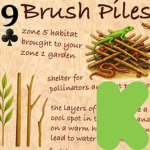this has been an especially bad year here with this stuff everywhere
I would just as soon pull it all out and let the plants fend for themselves
https://www.theatlantic.com/science/archive/2017/08/the-parasite-that-wires-plants-together/537141/
The Parasite That Wires Plants Together
By draining the fluids from several hosts, dodder vines inadvertently allow plants to communicate with each other and share alarm signals.
It goes by witch’s hair, strangleweed, devil’s gut, wizard’s net, and hellbine. And anyone who sees dodder vines in action will quickly understand why they’ve earned such dastardly, eldritch names. These parasitic plants emerge from the ground as a slender tendril, which sniffs around for chemicals released by potential hosts. When the tendril finds a target, it wraps itself around a stem, grows into it, and, like a vampire, begins to drain its fluids.
Wu’s colleagues Christian Hettenhausen and Juan Li tested this idea by connecting two soybean plants with dodder, and infesting one of them with caterpillars. The second plant got nary a nibble, but it still switched on hundreds of genes, including many that are involved in anti-insect countermeasures. It still produced higher levels of defensive chemicals. And when it was in turn attacked by caterpillars, it fended them off more effectively than plants that had never been parasitized by dodder.
![[Logo]](/templates/default/mobile/images/mobile-permies-2015.png)


